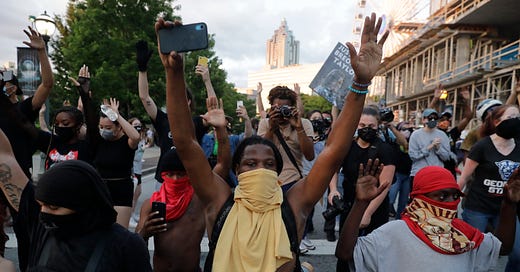Ten Captivating Photos From The Nationwide Black Lives Matter Protests
The North Star has dropped its paywall during this COVID-19 crisis so that pertinent information and analysis is available to everyone during this time. This is only possible because of the generous support of our members. We rely on these funds to pay our staff to continue to provide high-quality content. If you are able to support, we invite you to do…
Keep reading with a 7-day free trial
Subscribe to The North Star with Shaun King to keep reading this post and get 7 days of free access to the full post archives.




